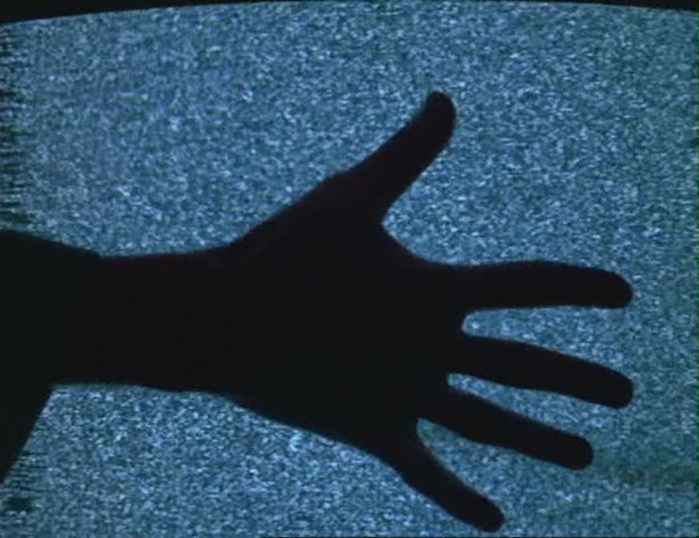
Godard was a radical filmmaker, even compared to his fellow New Wave directors. His first movie, Breathless (1958) featured groundbreaking jump-cuts in editing, which made the "invisible" Hollywood editing style seem old fashioned and tame (For those who have not seen Breathless and don't know what I mean by jump-cuts: Jump-cuts are visible editing that makes movements seem unnatural (watch an example HERE). Godard always experimented with the medium, frequently referring to the process of making movies inside the movie itself (Une Femme est une femme from 1962 begins with Anna Karina saying "Lights! Camera! Action!"), character's thoughts written in text on the screen, abrupt changes of style mid-movie and political symbolism. Godard often uses uncoventional stories which can often be summarized with a sentence. It's the images and construction of the film that's important to Godard. He wants to involve the viewer on every level, forcing the viewer to ponder even minor details.
"Prenom Carmen" was made in 1983, 25 years after his debut movie "Breathless". It was made after a disappointing decade with much scorn from movie critics and critique for his support of Mao Zedong. "Prenom Carmen" won The Golden Lion at the Cannes film festival and was fairly well-recieved when released. The plot is as follows: Carmen is planning to rob a bank with her friends. She tricks her uncle (played by Godard himself) into letting her borrow his house to supposedly make a movie. When robbing the bank, she falls in love with the security guard, Joseph, and they start up a romance.

There are several things going on in this movie. It has four "layers":
1. Carmen's world. Her romance and conflicts
2. A string ensemble rehearsing (with Joseph's "girlfriend")
3. Godard himself as a character and the allusion to filmmaking.
4. Godard's imagery that compliments Carmen's feelings
The first layer concerns Carmen, her romantic life and the robbery. She is frequently naked and is perfectly comfortable being so, which leads us to believe this is a strong female character. The second layer with the string ensemble layer could be interpreted as a meta-element, alluding to movie soundtracks, but it also functions as a plot element, as we learn that the girl playing violin is Josephs girlfriend or previous romantic partner. When the ensemble is playing, Godard often cuts to Carmen's world and the music is
 still playing like a conventional movie soundtrack, but it often stops abruptly. It also signifies the presence of "the other", the girl left by her boyfriend. The third layer is Godard and references to movies. Godard's character is a eccentric moviemaker (like himself) who is planning to make a film. Godard constantly hints to this being a film, clearly referring to the movie "Prenom Carmen" and not the movie he is supposedly making within the film. In one scene, he appears, then claps his hands and says: Cut! In another scene, he's talking with a man. The man is about to leave when Godard exclaims: "You can't go, the scene isn't finished yet!". This could be seen as either absurd humor or meta-elements. There are other absurd moments. When robbing the bank, Carmen and her gang shoots people. While lying on the blood stained floor, a cleaning maid appears and starts washing away the blood.
still playing like a conventional movie soundtrack, but it often stops abruptly. It also signifies the presence of "the other", the girl left by her boyfriend. The third layer is Godard and references to movies. Godard's character is a eccentric moviemaker (like himself) who is planning to make a film. Godard constantly hints to this being a film, clearly referring to the movie "Prenom Carmen" and not the movie he is supposedly making within the film. In one scene, he appears, then claps his hands and says: Cut! In another scene, he's talking with a man. The man is about to leave when Godard exclaims: "You can't go, the scene isn't finished yet!". This could be seen as either absurd humor or meta-elements. There are other absurd moments. When robbing the bank, Carmen and her gang shoots people. While lying on the blood stained floor, a cleaning maid appears and starts washing away the blood.
The fourth layer is Godard's imagery that compliments Carmen's feelings. Recurring images are the sea rising and lowering. When the romance becomes intense, the water is seen rising. Things are cooling off and Carmen is rejecting Joseph, the sea is seen retracting.


Also Godard uses trains that which are meeting. This image is repeated till the end when they break up, the train passes each other and go their separate ways. Godard also hints to the movie as a medium through imagery.The image of a television screen, with a silhouetted hand across it is also used. It expresses an emotion, a longing or love for the screen, almost caressing it.

Then at the end of the movie, Godard inserts one last reference to moviemaking:

You can clearly see the contrasts of a movie-reel. The movie ends with a brief text: In Memoriam Small Movies.



Ingen kommentarer:
Legg inn en kommentar